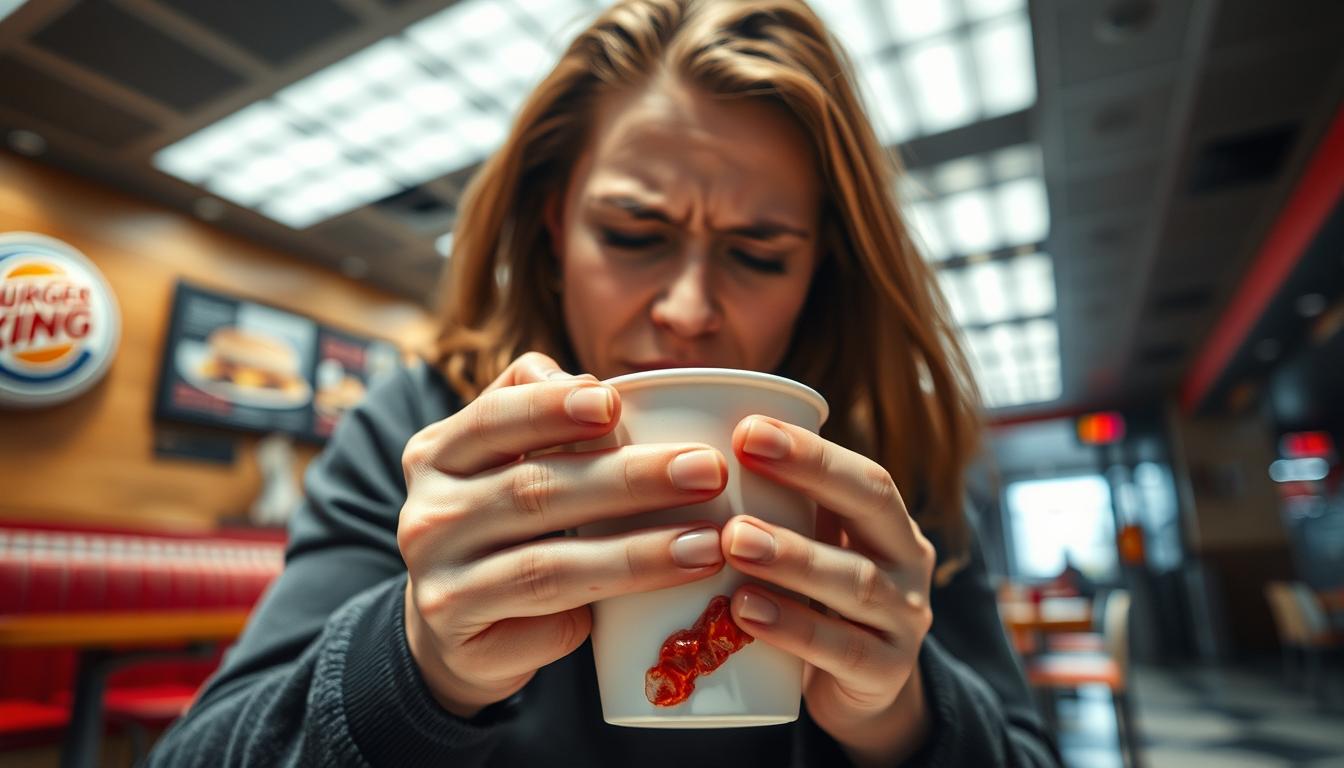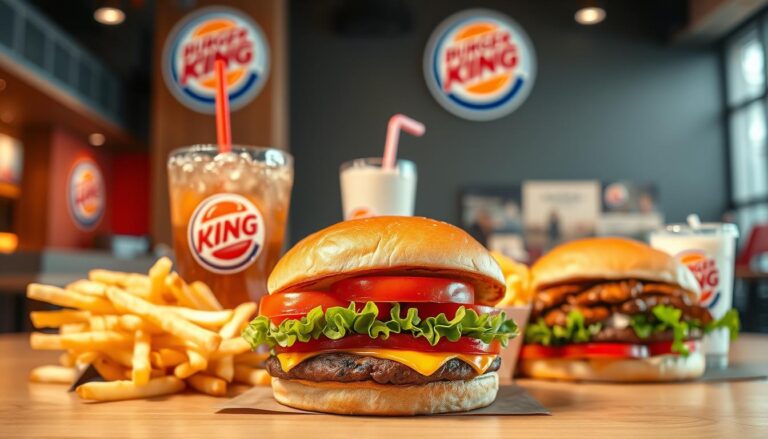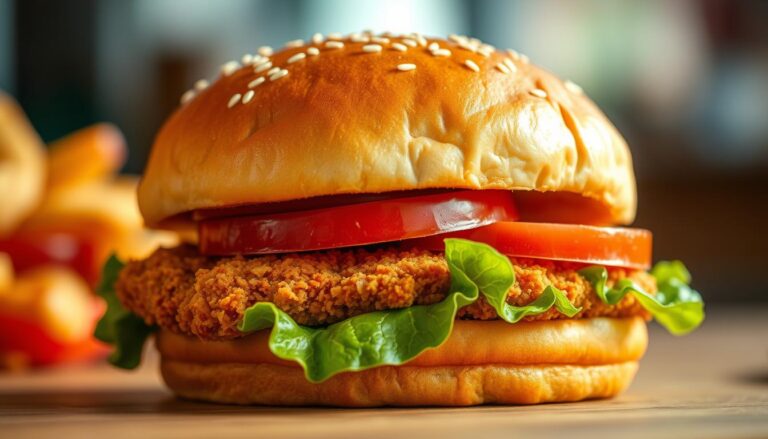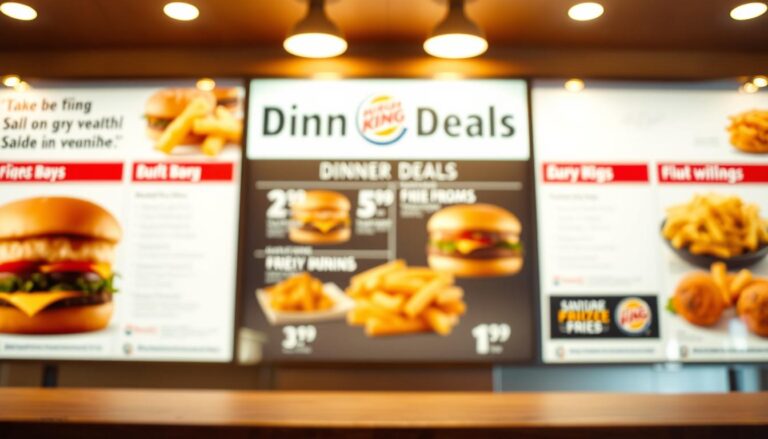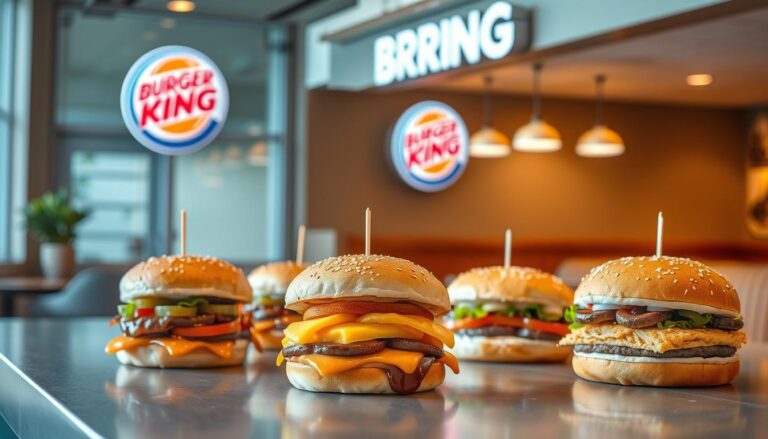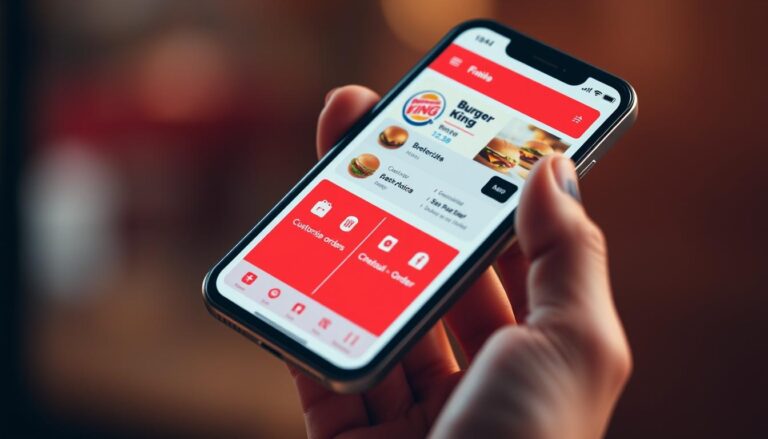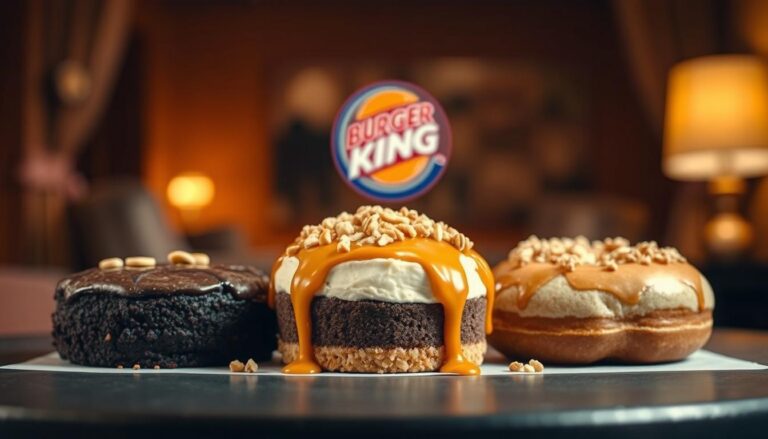Burger King Hot Coffee Incident: What You Need to Know
Hot coffee at Burger King has become more than just a drink. It’s a story that grabs national attention. It’s a reminder of the importance of customer safety and corporate responsibility.
The hot coffee case at Burger King shows the complexity of serving drinks. Customers want their coffee hot, but there’s a thin line between hot and harmful. Temperature, safety, and legal issues all come into play.
When a hot drink becomes a risk, restaurants face tough legal and ethical questions. The Burger King incident raises important questions about service standards and consumer protection. It’s not just about one restaurant, but about the whole industry.
These incidents are part of a bigger conversation about food service safety. Customers should know about the risks of what they buy. The hot coffee case shows how a simple transaction can turn into a big legal and public relations issue.
Looking into these incidents requires understanding different viewpoints. From customer experiences to corporate policies, each part is important. They help us see the bigger picture of serving hot drinks in fast-food places.
This investigation will dive into the Burger King hot coffee incident. We’ll look at its legal, social, and safety sides. You’ll learn about food service liability, consumer rights, and the push for safety in the industry.
As you read this detailed analysis, you’ll see the complex layers of a coffee service mistake. The story of Burger King hot coffee is more than a legal case. It shows how consumer protection is changing in the food service world.
Understanding Hot Coffee Lawsuits in Fast Food Industry
The fast food industry has changed a lot because of big legal cases about hot drinks. These cases made places like Burger King focus more on keeping customers safe. They now make sure their coffee is safe for everyone.
Burger King’s coffee service was looked at closely after some big legal fights. The most famous case happened in the late 1980s. It changed how restaurants handle their drinks all over the country.
History of Hot Beverage Legal Cases
- 1992 McDonald’s Hot Coffee Case: A key moment in legal history
- Stella Liebeck got third-degree burns from very hot coffee
- The first lawsuit led to a $2.86 million judgment
- It started a big talk about how hot drinks should be
Impact on Restaurant Policies
After these legal battles, fast food places made big changes. They started to control the temperature of their drinks better. They also:
- Made their drinks less hot
- Put clear warning labels on them
- Changed their cups to keep drinks warmer
- Trained their staff on how to handle drinks safely
Consumer Safety Concerns
The legal cases brought up big safety issues for customers. People became more aware of the dangers of very hot drinks. Places like Burger King had to make their safety rules stronger to avoid accidents.
Burger King Hot Coffee: Temperature Standards and Safety Measures
It’s key to know about coffee temperature standards for restaurant safety. Burger King’s coffee menu needs careful temperature control to avoid injuries. The fast-food world has rules for hot drinks to keep customers happy and safe.
Coffee temperatures are set to ensure it tastes good and is safe. Most experts say coffee should be between 160-185 degrees Fahrenheit. Burger King’s coffee prices show the effort put into keeping these standards.
- Standard coffee serving temperature: 160-185°F
- Minimum safe drinking temperature: 135°F
- Maximum recommended temperature: 200°F
Restaurants take steps to avoid burns:
- Using insulated cups with protective sleeves
- Training staff on proper beverage handling
- Implementing clear warning labels
- Regular temperature checks
| Temperature Range | Safety Risk Level | Recommended Action |
|---|---|---|
| Below 135°F | Low Risk | Safe for immediate consumption |
| 135-160°F | Moderate Risk | Allow cooling before drinking |
| Above 160°F | High Risk | Extreme caution required |
Modern tech helps places like Burger King keep drinks at safe temperatures. Digital thermometers and automated brewing systems are key in avoiding temperature issues.
The Kathleen Perez Case Against Burger King
In 2013, a big legal fight started over hot coffee at Burger King. Kathleen Perez sued, bringing attention to drink safety in fast-food places.
Incident Background
A severe burn happened from hot coffee at Burger King. Perez said the coffee was too hot. She claimed it was a big risk for anyone wanting hot coffee at Burger King.
Legal Proceedings Details
- Filed in local district court
- Claimed negligence in coffee temperature management
- Sought compensation for medical expenses
- Highlighted possible safety issues
Case Outcome and Implications
The case showed how important it is to keep drinks safe in restaurants. Even though the exact money paid was not shared, it made Burger King check their coffee-making ways.
| Case Element | Details |
|---|---|
| Plaintiff | Kathleen Perez |
| Year of Incident | 2013 |
| Primary Claim | Excessive Coffee Temperature |
| Legal Outcome | Settled Out of Court |
Public and Media Response
The media talked a lot about the Kathleen Perez case. It made people think more about safety in fast-food places. It also made everyone talk about the dangers of hot drinks and the need for better temperature rules.
Hot Coffee Temperature Regulations in Fast Food Chains
The fast food industry has strict rules for hot drinks after some big legal cases. Burger King’s coffee sizes are key in keeping drinks at safe temperatures for customers.
Experts say hot drinks should be served between 160-180°F. This keeps customers safe while they enjoy their drinks. The Occupational Safety and Health Administration (OSHA) sets these rules for places like Burger King.
- Recommended hot beverage serving temperature: 160-180°F
- Maximum safe drinking temperature: Around 140°F
- Cooling time for safe consumption: 2-3 minutes
Different sizes of Burger King coffee need special care to avoid burns. Bigger cups need more careful heat control.
| Coffee Size | Recommended Temperature | Cooling Time |
|---|---|---|
| Small (12 oz) | 170°F | 2 minutes |
| Medium (16 oz) | 165°F | 2.5 minutes |
| Large (20 oz) | 160°F | 3 minutes |
Fast food places keep updating their safety rules for hot drinks. They make sure staff know how to handle the temperature right.
Notable Fast Food Coffee Burn Cases
Hot coffee lawsuits have become a big deal in the fast food world. They show the dangers of very hot drinks and why we need to protect customers. Burger King Hot Coffee cases are just part of a bigger problem for restaurants.
The McDonald’s Liebeck lawsuit is the most famous coffee burn case. In 1992, Stella Liebeck got badly burned from hot coffee at McDonald’s. This led to a big legal fight that changed how we keep coffee safe.
Key Coffee Burn Incidents Across Restaurant Chains
- McDonald’s Liebeck Case (1992): 79-year-old woman received third-degree burns, resulting in a $2.86 million initial judgment
- Burger King Hot Coffee incidents: Multiple cases documented involving excessive beverage temperatures
- Starbucks burn lawsuits: Several instances of customer injuries from extremely hot coffee
Legal Precedents and Impact
These cases changed how coffee is served at Burger King and other fast food places. Courts started making rules for safer coffee. Now, there are clear warnings on hot drinks.
Industry-Wide Safety Transformations
Restaurants like Burger King have made big changes because of these lawsuits. They set new temperature rules, added clear warnings, and trained staff better. This all helps to reduce the risk of burns.
Safety Protocols for Serving Hot Beverages
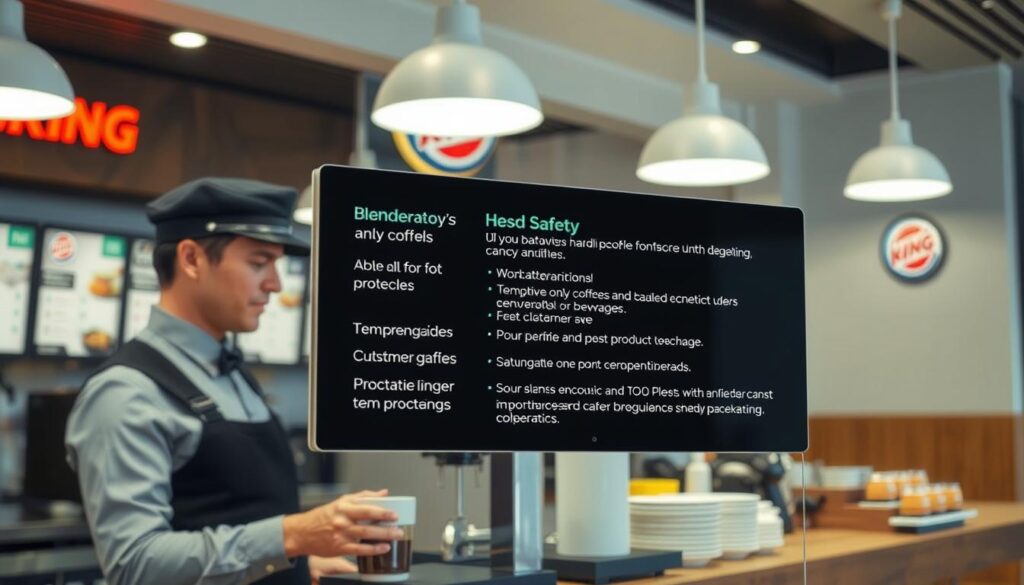
Fast food chains like Burger King take serious precautions when serving hot beverages. They ensure customer safety with rigorous safety measures. This is to prevent burn incidents and protect customers.
Restaurants implement training programs for staff handling Burger King fresh coffee. These programs focus on critical safety techniques:
- Proper cup handling and grip techniques
- Precise temperature control methods
- Secure lid attachment procedures
- Customer warning protocols for hot beverages
Modern coffee service equipment plays a key role in minimizing risks. Specialized coffee machines at Burger King include built-in safety features such as:
- Automatic temperature limiters
- Spill-resistant cup designs
- Ergonomic dispensing mechanisms
- Protective sleeve dispensers
Employee training emphasizes understanding appropriate beverage temperatures. Staff learn to maintain coffee temperatures between 150-160 degrees Fahrenheit. This is hot enough to taste great but not dangerously scalding.
Visual warning labels on cups and caution signs near coffee stations help. They communicate the heat risks to customers. This adds an extra layer of safety awareness.
Consumer Rights and Hot Beverage Safety
Understanding your rights is key when you enjoy a Burger King coffee. Hot beverage accidents can occur without warning. It’s important to know your legal rights and the safety standards in place.
When you buy hot drinks at fast food places like Burger King, you have certain legal rights. These rights make sure places follow strict safety rules. They also ensure that you get clear warnings about the dangers of hot drinks.
Legal Safeguards for Coffee Consumers
- Right to clear temperature warnings
- Protection against negligent serving practices
- Ability to seek compensation for serious injuries
- Expectation of reasonable safety measures
Industry Safety Standards
| Safety Standard | Description | Customer Protection |
|---|---|---|
| Temperature Regulation | Maximum safe serving temperature | Prevents extreme heat risks |
| Warning Labels | Clear notifications about hot beverages | Informed consumer choices |
| Handling Procedures | Staff training on safe beverage service | Reduced risk of accidents |
Customers of Burger King coffee should know their rights when enjoying hot drinks. Knowing these rights helps you make smart choices and stay safe while eating out.
Impact on Burger King’s Coffee Service Policies
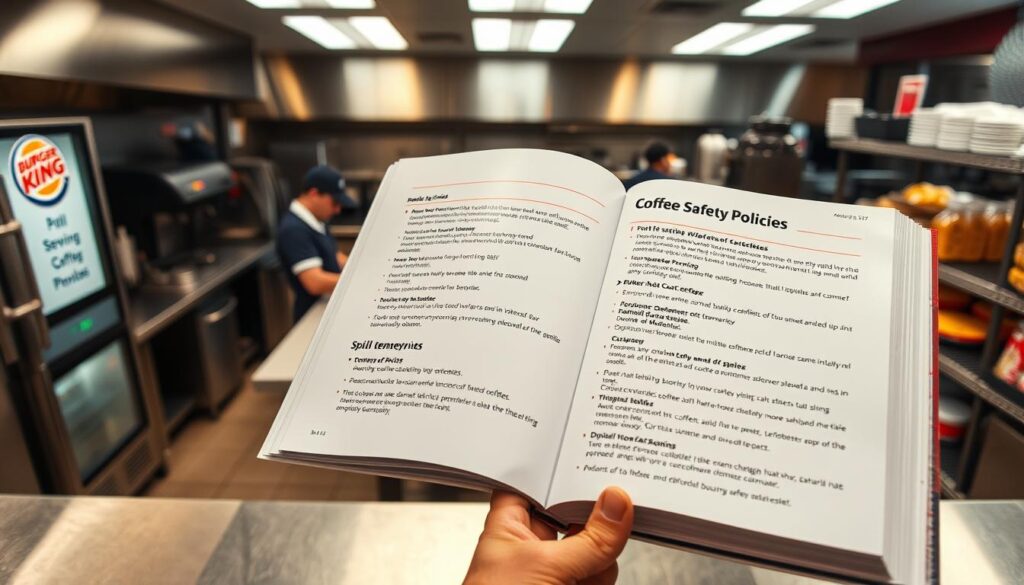
The hot coffee incident led to big changes at Burger King. The company knew keeping customers safe was key. So, they made big changes to their hot coffee service.
They updated their policies to lower the risk of burns from hot drinks. This was a big step to protect their customers.
Here are some of the main changes Burger King made:
- They set strict rules for the temperature of all hot drinks.
- They trained their staff better on how to make coffee safely.
- They made new cups that keep drinks hotter for longer.
- They added clear warnings about the dangers of hot liquids.
Burger King also looked at their coffee prices and how they serve it. They made sure every step of making coffee is safe for customers.
Experts said these changes were smart. They showed Burger King’s dedication to keeping customers safe. They also kept their coffee good and hot.
Here are some of the practical steps Burger King took:
- They made their coffee not as hot as before.
- They added a cooling time before serving.
- They introduced new sleeves to keep drinks warm.
- They trained their staff regularly on safety.
These changes show Burger King is serious about safety. They’re not alone in this. The whole industry is moving towards safer hot drinks.
Prevention Measures and Warning Labels
Coffee at Burger King needs careful handling to avoid burns. Fast food chains have set up safety plans to lower risks from hot drinks.
Burger King coffee sizes have safety warnings to keep customers safe. These steps include:
- Clear temperature warning labels on coffee cups
- Standardized serving temperature guidelines
- Enhanced employee training on beverage handling
- Improved cup design with thermal protection
Restaurants use advanced warning systems to alert about risks. These include:
- Printed caution messages about extreme temperatures
- Color-coded temperature indicators
- Protective sleeve designs
| Prevention Method | Description | Effectiveness Rating |
|---|---|---|
| Warning Labels | Explicit temperature caution messages | High |
| Thermal Cup Sleeves | Insulated protective covering | Medium |
| Employee Training | Safety protocols for beverage preparation | High |
The safety measures keep getting better. This shows the restaurant industry’s dedication to keeping customers safe while serving great coffee at Burger King and other fast food places.
Legal Implications for Restaurant Chains
Restaurant chains face big legal challenges when hot beverage incidents happen. Cases like Burger King Hot Coffee show how complex the legal world is for food service businesses. It’s key to know these legal issues to keep customers safe and protect the business.
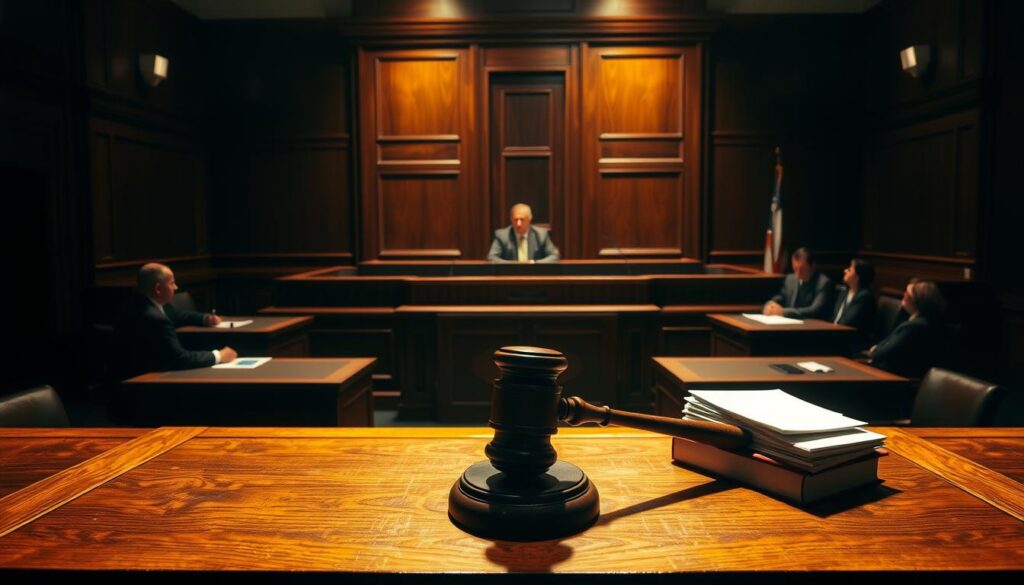
The legal world around hot coffee incidents has changed a lot in recent years. Restaurants like Burger King must now have strong risk management plans to avoid lawsuits.
Liability Challenges in Hot Beverage Services
Legal experts say there are several big liability risks for restaurant chains:
- Temperature control and warning protocols
- Cup design and structural integrity
- Staff training on beverage handling
- Clear consumer warning labels
Settlement Trends in Hot Coffee Litigation
Burger King fresh coffee cases show new trends in legal settlements. Companies are now more focused on preventing problems than just defending themselves in court.
- Average settlement amounts range from $5,000 to $50,000
- Most cases settle out of court
- Reputation management becomes a critical consideration
Risk Management Strategies
Successful restaurant chains use many ways to reduce legal risks:
- Implement strict temperature control protocols
- Provide extensive staff training
- Use advanced cup design with safety features
- Develop clear warning systems
By understanding and tackling legal risks, restaurant chains can keep their customers safe and their business strong in the competitive food service world.
Modern Safety Standards in Coffee Service
The coffee service industry has changed a lot in recent years. Burger King is leading the way with new safety measures. They want to make sure customers can enjoy their coffee safely.
Today, safety standards include advanced tech and training. The Burger King coffee menu shows these improvements. Here are some key changes:
- Temperature-controlled brewing systems
- Enhanced staff training on beverage handling
- Improved cup design with better insulation
- Clearer warning labels about hot beverages
New tech has helped reduce risks. Digital systems monitor coffee temperatures closely. This means every cup is safe to drink.
Training has also gotten better. It now covers:
- Proper coffee preparation techniques
- Safe handling and serving procedures
- Customer communication about beverage temperatures
- Emergency response protocols
The restaurant industry has learned from past mistakes. Burger King has put in place strict safety rules. They focus on keeping customers safe while serving great coffee.
These updates show Burger King’s dedication to safety. They want customers to feel safe and enjoy their coffee without worry.
Conclusion
The Burger King hot coffee incident shows how important safety is for fast food chains. Now, people know to check Burger King coffee prices and sizes before ordering. This case teaches us about the need to balance serving good drinks and keeping customers safe.
After legal battles, restaurants have changed their safety rules. They now check the temperature of drinks, use clear warning labels, and train staff well. This shows that keeping customers safe is more important than saving money or making things easy.
These lessons have helped customers make better choices. Knowing the risks and understanding safety standards lets them enjoy their Burger King coffee more. The talks between customers, laws, and restaurants keep making drinks safer in fast food places.
Restaurants need to stay careful and keep improving. Every problem is a chance to get better at keeping customers safe. The lessons from these cases remind food places of their duty to their customers.
